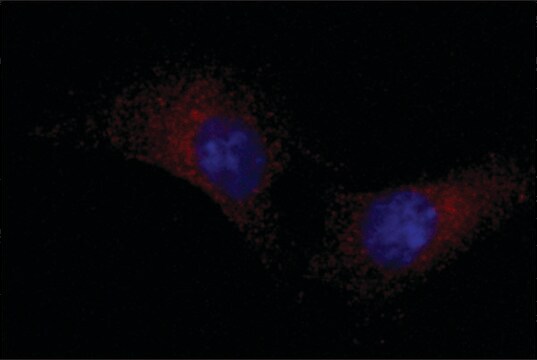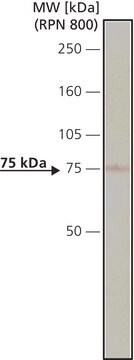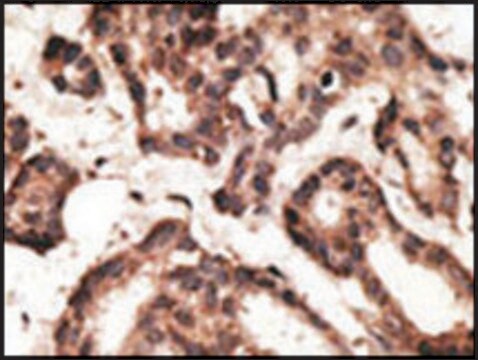Key Documents
L2420
Monoclonal Anti-LRP1 antibody produced in mouse
~1.0 mg/mL, clone LRP1-11, purified immunoglobulin, buffered aqueous solution
Synonim(y):
Anti-A2MR, Anti-APOER, Anti-APR, Anti-Apolipoprotein E receptor, Anti-Apolipoprotein receptor, Anti-CD91, Anti-LRP, Anti-Lipoprotein receptor-related protein, Anti-Low density lipoprotein receptor-related protein 1
About This Item
Polecane produkty
pochodzenie biologiczne
mouse
białko sprzężone
unconjugated
forma przeciwciała
purified immunoglobulin
rodzaj przeciwciała
primary antibodies
klon
LRP1-11, monoclonal
Postać
buffered aqueous solution
masa cząsteczkowa
antigen ~500 kDa
reaktywność gatunkowa
human, rat, mouse
stężenie
~1.0 mg/mL
metody
indirect immunofluorescence: suitable
western blot: 1-2 μg/mL
izotyp
IgG1
numer dostępu UniProt
Warunki transportu
dry ice
temp. przechowywania
−20°C
docelowa modyfikacja potranslacyjna
unmodified
informacje o genach
human ... LRP1(4035)
mouse ... Lrp1(16971) , Lrp1(299858)
Opis ogólny
Specyficzność
Zastosowanie
- immunoblotting
- enzyme linked immunosorbent assay
- immunofluorescence
Działania biochem./fizjol.
Postać fizyczna
Przechowywanie i stabilność
Oświadczenie o zrzeczeniu się odpowiedzialności
Nie możesz znaleźć właściwego produktu?
Wypróbuj nasz Narzędzie selektora produktów.
polecane
Kod klasy składowania
10 - Combustible liquids
Temperatura zapłonu (°F)
Not applicable
Temperatura zapłonu (°C)
Not applicable
Certyfikaty analizy (CoA)
Poszukaj Certyfikaty analizy (CoA), wpisując numer partii/serii produktów. Numery serii i partii można znaleźć na etykiecie produktu po słowach „seria” lub „partia”.
Masz już ten produkt?
Dokumenty związane z niedawno zakupionymi produktami zostały zamieszczone w Bibliotece dokumentów.
Nasz zespół naukowców ma doświadczenie we wszystkich obszarach badań, w tym w naukach przyrodniczych, materiałoznawstwie, syntezie chemicznej, chromatografii, analityce i wielu innych dziedzinach.
Skontaktuj się z zespołem ds. pomocy technicznej








